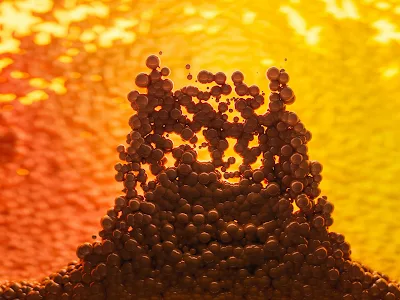For over a century, scientists have been fascinated by superconductors—materials that can conduct electricity with zero resistance. The implications are enormous: perfect energy efficiency, lossless power transmission, and groundbreaking advancements in technologies like magnetic levitation and quantum computing. But until recently, superconductivity has only been achievable at extremely low temperatures, often requiring expensive and bulky cooling systems.
Enter the quest for room-temperature superconductors. The promise is bold: materials that can exhibit superconductivity under normal conditions, removing the need for cryogenic cooling. If realized, this breakthrough could revolutionize multiple industries, from energy to medicine to transportation. But how close are we really to achieving it? Is this an impending reality or just another chapter in a long history of scientific overpromising?
What Is a Superconductor?
Superconductors are materials that, below a certain critical temperature, allow electric current to flow without resistance. They also exhibit the Meissner effect, which causes them to expel magnetic fields, leading to applications in powerful electromagnets, MRI machines, and maglev trains.
Traditional superconductors require cooling to near absolute zero. Even so-called "high-temperature superconductors," discovered in the 1980s, operate at around -135°C (138 K), still well below freezing and only practical with liquid nitrogen or helium.

Recent Breakthroughs
In recent years, several high-profile studies have claimed progress toward room-temperature superconductivity. One of the most notable came in 2020, when researchers at the University of Rochester reported superconductivity at 15°C (288 K), using a hydrogen sulfide compound under extreme pressure—267 gigapascals, more than two million times atmospheric pressure.
While this was a landmark achievement, the catch was clear: such high pressures are not feasible for practical applications. Creating a device that can operate under those conditions is currently out of reach.
In 2023, another Rochester-led paper made headlines with a material called "reddmatter," a nitrogen-doped lutetium hydride claimed to exhibit superconductivity at 21°C (294 K) and much lower pressure—just 10 kilobars. The claim caused a media frenzy but was quickly met with skepticism. Subsequent investigations revealed inconsistencies in the data, and the paper was ultimately retracted by Nature in late 2023.
Why Is This So Difficult?
Room-temperature superconductivity is a holy grail because it's so hard to achieve. The phenomenon arises from complex interactions between electrons, lattice vibrations, and quantum effects. Most conventional theories, like BCS theory, explain low-temperature superconductivity well but fall short for materials that might work at ambient temperatures.
To achieve superconductivity without cooling, scientists have been experimenting with exotic materials, often involving hydrogen. Hydrogen-rich compounds, under pressure, can mimic metallic behavior conducive to superconductivity. But stabilizing these phases at usable conditions remains a massive challenge.

What Are the Stakes?
If room-temperature superconductors become viable, the implications are staggering:
-
Energy transmission: Today, up to 10% of electricity is lost as heat during transmission. Superconductors could eliminate this loss.
-
Electronics: Superconducting materials could lead to ultra-fast, energy-efficient computers.
-
Transportation: Maglev trains that float without friction could become mainstream.
-
Healthcare: MRI machines could become cheaper and more accessible.
But for now, these remain mostly theoretical applications. The materials needed either don’t exist at scale or require conditions incompatible with real-world deployment.
Cautious Optimism in the Scientific Community
Despite setbacks, researchers are not giving up. The theoretical basis for room-temperature superconductivity is improving, driven by advances in materials science, computational modeling, and high-pressure physics. Laboratories worldwide, from MIT to China’s CAS, are exploring novel hydride systems and using machine learning to predict promising new compounds.
Yet most physicists and materials scientists urge caution. The history of the field is littered with overhyped claims, unreplicated results, and, in some cases, outright misconduct. The retraction of high-profile papers has underscored the need for transparency and reproducibility.

Conclusion: Hope on the Horizon, But Tempered by Reality
The race for room-temperature superconductors is far from over. There is real hope that one day such materials will be found—or engineered—to operate at everyday pressures and temperatures. But the path forward requires rigorous science, not just flashy headlines.
For now, the dream remains just that—a dream with tantalizing glimpses of possibility. Whether hype or hope, it’s clear that the quest is not just a scientific challenge, but a test of patience, integrity, and persistence.
Comments
Post a Comment